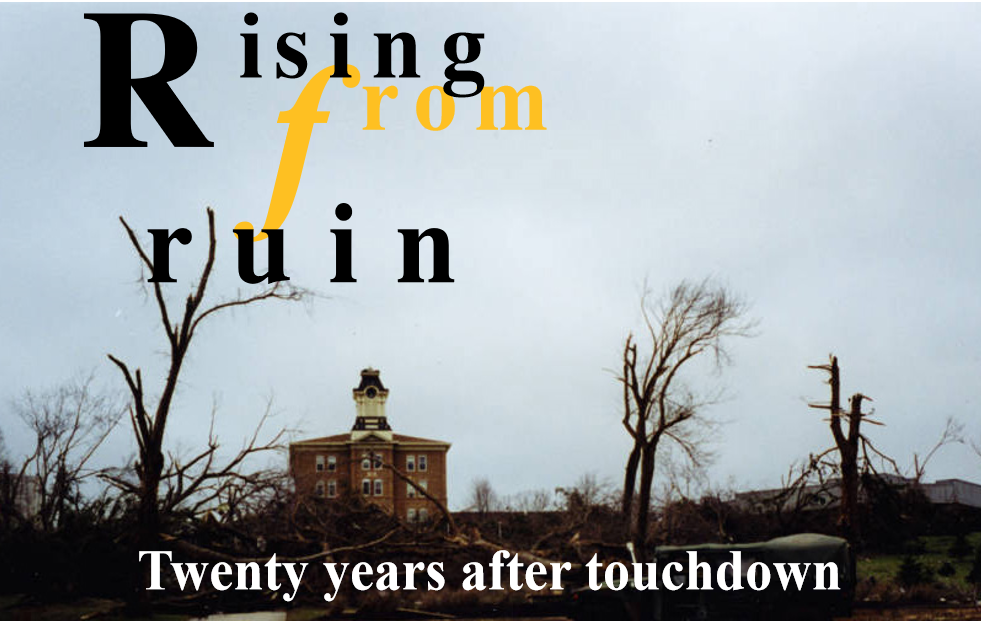Next week marks the 20-year anniversary of the devastating F3 tornado which hit St. Peter in 1998.
The tornado arrived at 5 p.m. on March 29, and resulted in over $50 million in damage to the Gustavus campus, with even more damage to the wider St. Peter area.
Over 200 homes were destroyed, along with over 17,000 trees lost. Gustavus alone lost over 2,000 fully-grown trees, and 80 percent of its windows.
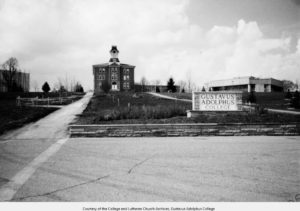
“It was the first time you could see the town from campus, because all of the trees were down. But it made it feel like we were really part of the town,” Professor Glenn Kranking ‘98 said, who was a senior living in the Swedish House, the second oldest building on campus, at the time of the tornado.
According to the National Weather Service, the tornado was part of a supercell that struck Comfrey and Le Center.
The event was the greatest March tornado outbreak in Minnesota history.
To commemorate the natural disaster and the rebuilding of the community, four witnesses spoke at a panel at Gustavus this week about their experiences 20 years ago.
Steve Kjellgren ‘86, Associate Vice President of Auxiliary Services, said, “It was just like you hear people talk about; the pressure [just] dropped… I remember it being so loud.”
“You could feel the pressure in the air, in your lungs,” Kranking said.
Kjellgren said that a car was leaning up against his front door: “The garage wall is blown out and the garage door is laying on top of my car… when I looked out, there was a carhood against my front door… nothing outside seemed like it was where it was supposed to be.”
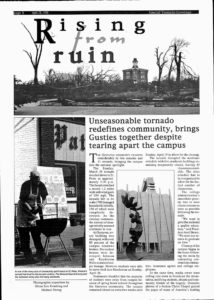
JoNes VanHecke ‘88, Vice President for Student Life and Dean of Students, recounts her experience coming back to campus: “The parking lot was a mess. There were cars flipped, on top of each other, on their sides.”
Kjellgren recalls the bank alarms going off “as if it was being robbed.” He compared it to a warzone.
“All of our shingles were in the front yard,” Alumni Dean Wahlund ‘72 said.
All four panelists agree it was a terrifying and traumatic experience, but one that brought the whole community together.
“Those people that were here really did pull together and there was a common mission and that was getting the doors open so the students could finish out the year,” Kjellgren said. “We didn’t compromise what we stood for, and that was to provide a good experience for our students.”
Thankfully, Gustavus students were on spring break during the storm; originally, spring break was supposed to take place a week later.
But, due to fate or luck, there were very few people on campus at the time of the storm.
There were no casualties despite the 50 students living on campus during the break.
Gustavus reopened three weeks after the tornado, with almost half of the classrooms unusable.
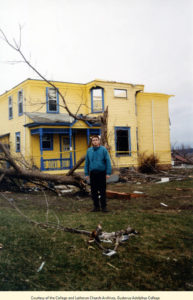
Johnson Hall, a small residential building, was completely destroyed along with the Swedish House.
The St. Peter Catholic Church, the Arts and Heritage Center, the St. Peter Evangelical Church, and the St. Peter Community Center were all destroyed, and the Library and Hospital were both damaged.
Also, the recognizable spire of Christ Chapel fell and the cross was found on the other side of campus.
However, according to Wahlund, “When you walked in the chapel, the everlasting light was still going. That’s when you knew it was safe.”
Volunteers, employees, and students all ended their days of hard work with a prayer in the Chapel, thankful for the efforts of the community.
Today, students and staff mourn the destruction and celebrate the building of a greater Gustavus.
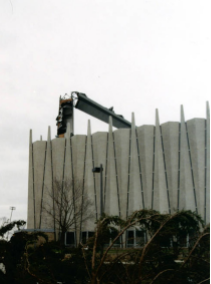
“This deep connection we have for this institution, for this place, for the people, that’s the enduring legacy of all of this,” Kranking said.
Kranking also mentioned how for years before the tornado, people at Gustavus felt there wasn’t a sense of community and were working towards that as their end goal.
“[When] the tornado happened, it revealed that really there was this very strong sense of community all along… we might have lost trees, we might have lost buildings and homes, but [our] bond is even stronger,.” Kranking said.
